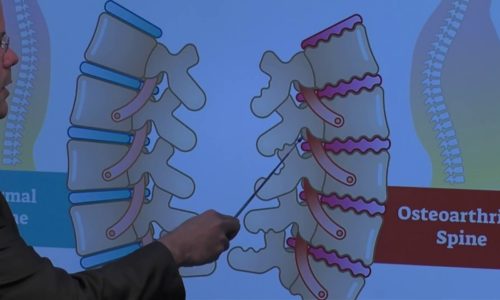Learning About Stress Fractures |
Noel Gressner, Physical Therapist at Miami Orthopedics and Sports Medicine Institute, explains spondylolysis and spondylolisthesis are terms to refer to a certain area of the spine of the vertebral column that would be fractured. He says it is like an extension and rotation type of mechanism of injury repetitively happening to what’s called the pars interarticularis.
According to him, stress fracture can progress into a full-blown fracture and it can also progress into both sides.
Transcript
All right so I want to talk now more about stress fractures in one or more of the small bones that make up the lower back right yes with our little model here which has been so helpful we’re hearing that it’s becoming very common in adolescence and teen athletes more aggressive if you will with the sports what’s going on? Well dependent upon stress fractures in the low back or spondylolysis or spondylolisthesis so those two terms are referred to or specifically to a certain area of the spine of the vertebral column that would be fractured and typically it’s more so of an extension and rotation type of mechanism of injury repetitively happening to what’s called the pars interarticularis so if you if you look at this vertebra and if I put my fingers here these that might be the the nose of the dog the snout of a dog that would be an ear these would be the feet and so if a doctor is looking on an x-ray and you’re holding that up and you would call it a Scottie dog and so you’re looking at that aspect which is called the pars interarticularis and that’s typically where a spinal stress fracture can happen stress fracture can progress into a full-blown fracture and it can progress into on both sides suppose spondylolysis would be a fracture to the pars interarticularis spondylolisthesis would be a fracture to both sides and then subsequently a forward slippage of one vertebra underneath the other.








